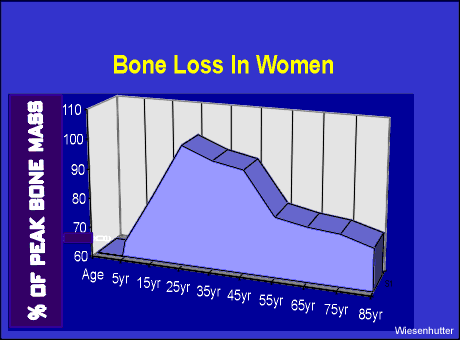U.C.L.A. Rheumatology Pathophysiology of Disease Course Lecture,
Second Year Medical School 1997
Osteoporosis Page 26
Aging associated (Type 2) osteoporosis is a result of a decrease of the amount of bone formed with each cycle over time. It appears that there is a general loss of osteoblasts with aging which more significantly impacts the formation of cortical bone.
